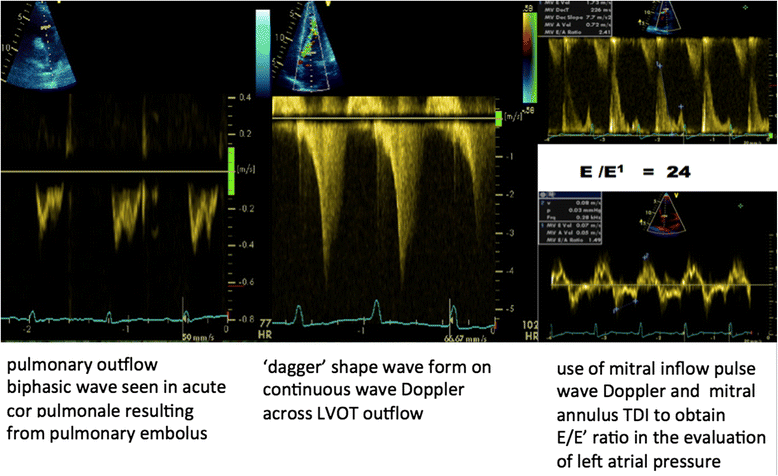Echocardiography in shock management
- PMID: 27543137
- PMCID: PMC4992302
- DOI: 10.1186/s13054-016-1401-7
Echocardiography in shock management
Abstract
Echocardiography is pivotal in the diagnosis and management of the shocked patient. Important characteristics in the setting of shock are that it is non-invasive and can be rapidly applied.In the acute situation a basic study often yields immediate results allowing for the initiation of therapy, while a follow-up advanced study brings the advantage of further refining the diagnosis and providing an in-depth hemodynamic assessment. Competency in basic critical care echocardiography is now regarded as a mandatory part of critical care training with clear guidelines available. The majority of pathologies found in shocked patients are readily identified using basic level 2D and M-mode echocardiography. A more comprehensive diagnosis can be achieved with advanced levels of competency, for which practice guidelines are also now available. Hemodynamic evaluation and ongoing monitoring are possible with advanced levels of competency, which includes the use of colour Doppler, spectral Doppler, and tissue Doppler imaging and occasionally the use of more recent technological advances such as 3D or speckled tracking.The four core types of shock-cardiogenic, hypovolemic, obstructive, and vasoplegic-can readily be identified by echocardiography. Even within each of the main headings contained in the shock classification, a variety of pathologies may be the cause and echocardiography will differentiate which of these is responsible. Increasingly, as a result of more complex and elderly patients, the shock may be multifactorial, such as a combination of cardiogenic and septic shock or hypovolemia and ventricular outflow obstruction.The diagnostic benefit of echocardiography in the shocked patient is obvious. The increasing prevalence of critical care physicians experienced in advanced techniques means echocardiography often supplants the need for more invasive hemodynamic assessment and monitoring in shock.
Keywords: Critical care echocardiography; Hemodynamic echo evaluation; Shock assessment.
Figures




References
Publication types
MeSH terms
LinkOut - more resources
Full Text Sources
Other Literature Sources

